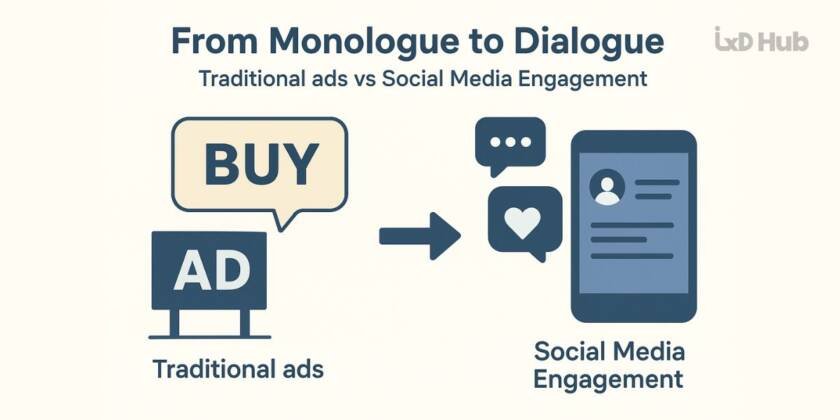What is old vs new age marketing? If you’ve been in business long enough, you’ve probably seen the shift: what used to work like clockwork in marketing a decade ago doesn’t quite land the same today. Buying a prime-time TV ad once guaranteed attention. A newspaper front-page feature meant credibility. But in 2025, the story is different. Customers don’t just consume—they interact, respond, and demand value.
This evolution has given rise to new-age marketing, powered by data, technology, and real-time engagement. But here’s the truth: traditional marketing is not dead—it just needs to be reimagined and integrated with new-age practices.
How New-Age Marketing is Changing the Old Way

1. From Monologue to Dialogue
Traditional marketing spoke at customers. TV, billboards, and print were one-way broadcasts. But today, social media, live chats, and community forums turn this into a two-way conversation. Customers now ask questions, leave reviews, and expect fast, transparent responses. Brands that embrace this dialogue become more human—and more trusted.
Example: Think about Wendy’s Twitter. The brand doesn’t just promote; it chats, jokes, and responds to customers—turning followers into fans.
2. From Broadcasting to Targeting
Old marketing was like a billboard on a highway: everyone saw it, but only a few cared. New-age marketing is data-driven targeting. Platforms like Google Ads and Meta Ads allow brands to pinpoint audiences by interest, location, or behavior.
Example: Instead of running a costly TV ad, a coffee brand can target only young professionals within 5 miles of their café with a Facebook campaign offering a free first latte.
3. From Guesswork to Insights
Traditional campaigns often ended with “We hope it worked.” Now, every click, share, and purchase is measurable. Tools like Google Analytics, HubSpot, or heatmaps provide clarity into what works and what doesn’t.
Example: An e-commerce store can test two product page headlines (A/B testing) and choose the one that drives 20% more conversions—a decision backed by data, not gut feel.
4. From Selling to Providing Value
The old way: interrupt with ads. The new way: attract by helping. Educational blogs, how-to videos, free resources, and webinars all build trust before the sales pitch.
Example: HubSpot grew into a $1B company by offering free educational content and tools (like website graders and CRM) long before pushing its paid products.
The Hybrid Future: Old Meets New
The smartest marketers aren’t picking sides—they’re blending both eras:
-
Offline Brand Building with Online CTAs → Print ad + QR code that leads to a custom landing page.
-
Traditional Events Amplified Online → A physical conference paired with a TikTok or Instagram live stream.
-
Content Repurposing → A digital case study turned into a trade show brochure.
When old-school credibility combines with new-age precision, you get reach and relevance.
Pain Points We’ve Seen & How to Fix Them
| Pain Point | The Challenge | How to Fix It |
|---|---|---|
| Budgeting for the Unknown | Traditional = big predictable spends. Digital = agile & test-heavy. | Start small. Prove ROI with pilot projects, then scale. |
| Cultural Resistance | Teams cling to “old ways.” | Run quick-win experiments (like $200 social ads generating 100 leads). Use results to win trust. |
| Fragmented Strategies | Teams work in silos. | Create one unified marketing calendar across all channels. |
| Data Overwhelm | Too many vanity metrics. | Define KPIs upfront. Focus on conversions, not likes. |
| Lack of Authenticity | Forced “cool” branding online. | Stay true to your brand voice. Be genuine, not trendy. |
The AI Factor in New-Age Marketing
AI is the secret weapon bridging both worlds. From predicting customer behavior (using data models) to automating personalization (AI-driven emails or chatbots), it ensures businesses remain relevant at scale.
Example: An AI tool can analyze thousands of customer interactions and suggest the best time to post content or which product bundles will sell better—insights that no human team could generate at the same speed.
Key Takeaway
Old-age marketing gave us credibility. New-age marketing gives us precision. Together, they offer businesses the chance to build brands that connect deeply and convert effectively.
Is your marketing strategy still stuck in the old era? Or are you missing out by ignoring traditional strengths?
At IxD Hub, we design websites and strategies built for the new age—without losing the human touch of the old.Contact us here or message us on WhatsApp to discuss how your business can thrive with a blended marketing approach.
FAQs on Old vs New Age Marketing
Q1: Is traditional marketing still relevant in 2025?
Yes. Traditional methods like print, events, and TV still build trust and credibility but should be paired with digital strategies for maximum impact.
Q2: What’s the biggest advantage of new-age marketing?
Data. It allows precise targeting, real-time feedback, and measurable ROI.
Q3: How can AI help small businesses with marketing?
AI tools can automate repetitive tasks (like emails or chat support), predict trends, and suggest strategies—saving time and budget.
Q4: Can a small business balance both old and new marketing with limited resources?
Absolutely. Start with small experiments in digital (like a social ad campaign) while continuing low-cost traditional methods (like flyers or local events).
Q5: Do I need a new website to adapt to new-age marketing?
If your website isn’t optimized for lead generation, analytics, and mobile, you’re leaving money on the table. IxD Hub can help fix that.